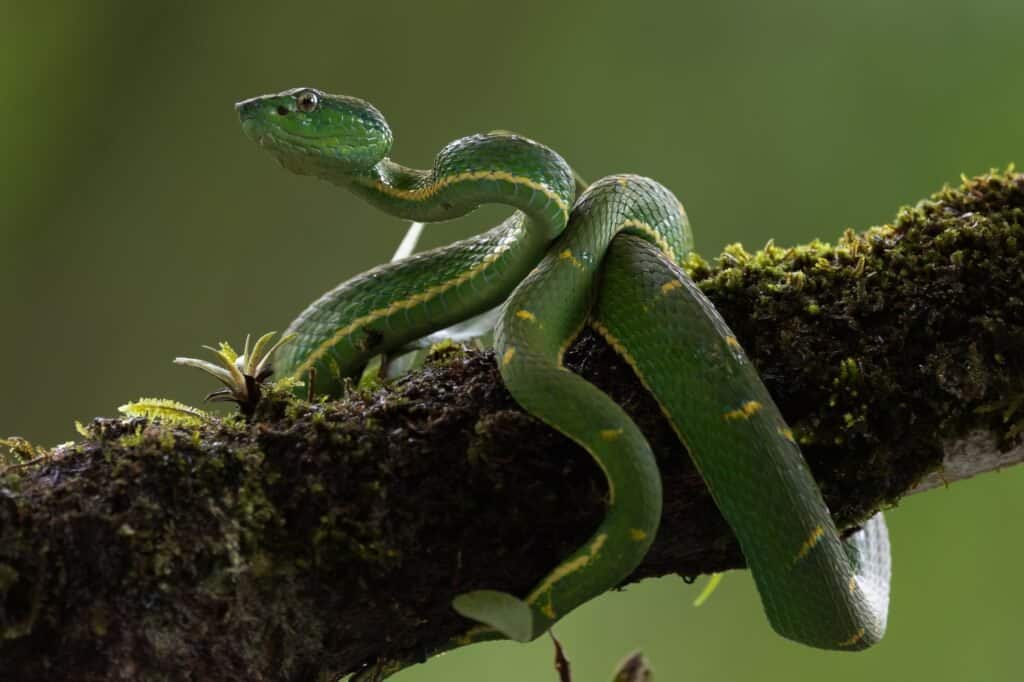Introduction
Tiger serpents are amongst one of the most popular and feared reptiles in Australia, extensively recognized for their striking appearance and potent venom. This write-up intends to look into the intricacies of the tiger serpent's habitat, distribution, behavior, and what one can anticipate when coming across these fascinating creatures. By recognizing where to find them and Camouflage in Australian snakes how to browse possible dangers, you can value their role in the ecosystem while ensuring your safety.
Tiger Serpent Environment: Where to Discover Them and What to Expect
Tiger serpents are mainly found in southeastern Australia, including Tasmania, where they prosper in a range of environments. Their flexibility allows them to live in varied surfaces such as coastal regions, wetlands, meadows, and also city locations.
Geographical Distribution of Tiger Snakes
The geographical reach of tiger snakes expands throughout a number of Australian states. They are specifically usual in:
- Tasmania: The Tasmanian tiger snake is one of the most identified subspecies. Victoria: Found near water bodies like rivers and lakes. New South Wales: Preferring bushland locations close to water sources. Western Australia: More typically seen around swamps and estuaries.
Understanding the geographical distribution is important for both preservation efforts and public recognition concerning experiences with these snakes.

Preferred Habitats of Tiger Snakes
Tiger snakes thrive in numerous habitats. Below are some common atmospheres where they may be located:
Wetlands: They like marshy or marshy locations where they can access prey easily. Coastal Regions: Near beaches or rocky shorelines provide bountiful food sources like fish and amphibians. Forested Areas: Thick brushwood supplies sanctuary from predators while giving hunting grounds.Behavioral Patterns Associated with Habitat
Understanding tiger serpent actions within their environments is vital for communication administration:
- Nocturnal Activity: Tiger snakes often tend to be much more active during twilight hours (dusk and dawn), making them tougher to find during daytime. Territorial Nature: They exhibit territorial behavior; hence, it's critical to value their room if encountered.
This understanding can aid reduce unwanted communications between human beings and tiger snakes.
Are Tiger Snakes Venomous?
Yes, tiger serpents are undoubtedly venomous. Their venom includes neurotoxins that can create paralysis or perhaps death Australia's most venomous snakes if untreated.
What Makes Their Venom Dangerous?
The potency of a tiger serpent's venom differs depending upon several elements:
- Geographic location Individual health Quantity infused during a bite
Symptoms of a Tiger Serpent Bite
Recognizing signs early is important:
- Pain at the bite site Swelling Difficulty breathing
Immediate medical focus is important if bitten.
First Aid for Snake Bites
Knowing first aid treatments How to identify Australia's deadliest snakes can be lifesaving in case of a snake bite.
First Help Tips for Serpent Bites
Stay calm; maintain the afflicted area still. Call emergency situation services immediately. Apply a pressure bandage above the bite site. Keep the individual lying down until assistance arrives.Following these actions can dramatically boost end results complying with a snake encounter.
Where Else Can You Experience Tiger Snakes?
While they're commonly found in their natural habitats, urbanization has led to enhanced experiences with humans.
Urban Encounters
Tiger serpents might venture into yards or parks searching for food or water sources.
Precautions When Hiking or Exploring
When discovering locations known for tiger serpent environments:

- Wear thick boots Stay on paths Be vigilant
Taking these precautions will aid minimize dangers while you take pleasure in nature.
Baby Tiger Snakes: A Distinct Viewpoint on Growth
Just like adults, infant tiger serpents are born venomous however smaller in dimension.
Characteristics of Infant Tiger Snakes
- Size: Usually around 20-- 30 centimeters when born. Appearance: Sporting activity comparable pigmentation as grownups but might have lighter bands initially.
Understanding their development helps in valuing their ecological duty from infancy onward.
FAQs regarding Tiger Snakes
1. Are all tiger snakes venomous?
Yes, all species of tiger serpents possess venom capable of triggering significant harm.
2. How can I determine a tiger snake?
Look for distinct banding patterns varying from yellowish-brown to blackish colors along their bodies; grownups usually expand in between 1-- 2 meters long.
3. What must I do if attacked by a tiger snake?
Seek prompt medical focus; use emergency treatment actions as reviewed earlier while maintaining calm.
4. Do baby tiger snakes pose any type of danger?
Absolutely! Despite their small size, baby tiger snakes are still poisonous and can provide attacks that call for significant medical attention.

5. Exist any particular environments I need to avoid?
Avoid walking through dense underbrush or near stagnant water where conditions prefer snake presence during warmer months.
6. Exactly how do conservation initiatives influence tiger serpent populations?
Conservation campaigns concentrate on habitat conservation which directly affects population stability by ensuring enough food sources and safe reproduction locations.
Conclusion
In recap, comprehending "Tiger Serpent Environment: Where to Find Them and What to Expect" not just enriches our expertise concerning these amazing reptiles yet likewise boosts our capability to exist together securely with them in shared atmospheres. From identifying their chosen environments to recognizing how to react effectively if bitten, extensive understanding empowers us all-- whether we're wild animals fanatics or informal walkers-- to value this interesting element of Australia's all-natural heritage while prioritizing our safety.
This post works as a comprehensive guide on whatever pertaining to tiger serpent habitats! Whether you're a devoted explorer or someone looking just for details regarding these animals, recognizing how they interact within their communities-- and exactly how we match that photo-- is crucial!